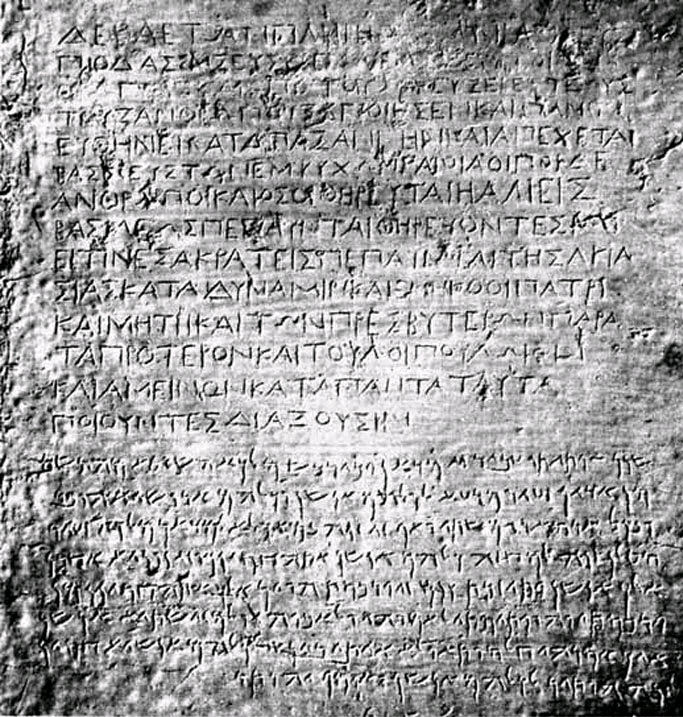Why would it matter he is dead?
The Life Of The Buddha: BBC Documentary
by frankiespeakin 19 Replies latest jw friends
-
-
-
-
-
-
Satanus
Yogis of tibet is interesting. The development of bon buddhism, good.
S
-
fulltimestudent
In the last week an announcement has been made of a discovery in Lumbini, Nepal at the traditional site for the birth of the Buddha. Its claimed to be the remains of a small shrine that dates back to around the 6th C BCE, and is hailed as evidence for an early date for the birth of Prince Siddhartha Gautama who laterr became the Buddha. The site is visited by hundreds of thousands of pilgrims each year, so the archeological work must've been somewhat difficult.
Not all academics agree with the present explanations by the discovery team. Some think the discovery could be of an earlier Hindu shrine.
A National Geographic report of the discovery can be found at: http://news.nationalgeographic.com/news/2013/11/131125-buddha-birth-nepal-archaeology-science-lumbini-religion-history/
From my viewpoint the current shrine is an interesting parallel to the Christian Bethlehem shrine.
Buddhism is older than Christianity, so did early Christians copy a Buddhist practise?
Buddhism could be described as the world's first missionary religion, did Christianity copy that feature of Buddhism also. Buddhist missionary activity was tied to the trade networks of antiquity. Both Jewish and early Christian missionary activity followed the trade routes.
An Indian King (Ashoka) promoted Buddhism and organised an intensive missionary program.
An inscription detailing Ashoka's work was discovered in Kandahar, it's written in both Greek and Aramaic and is dated to the third century BCE. (At that time, Afghanistan had been colonised by Greeks (from Alexander's time and through the Seleuccid era).
Here's a reproduction (from Wikimedia)
And, this wikimedia file map illustrates the description of missionary work described on the Ashoka Inscritpion.
(Ashoka ruled 260-218 BCE)
Another interesting parallel development can be noted in the role of King Ashoka in the promotion of Buddhism, Ashoka gave Buddhism, official status.
Five hundred years later, Christianity was promoted by the Emperor Constantine, and given official status by Constantine. Without Constantine's promotion,
Christianity may not have become an international religon. Another parallel is that by the time of Ashoka Buddhism was riddled with dissension, and Buddhist leaders were using grand councils to try and settle the disputes. Ashoka arranged one grand council.
By the time of Constantine, Christianity also had many disputes, and Constantine arranged the first council of Nicaea as his effort to quell the dissension. (It didn't work)
More parallels can be seen in the spiritual practises of both religions in the form of monasticism. Both Buddhism and early Christianity developed monastic practises, often involving chanting and spiritual exercises designed to bring enlightenment.
Even the organisation of JWs has a form of monasticism in the organisation of various Bethel homes around the world. Bethel members also take a vow of poverty. Interesting, isn't it?
Can it all have been coincidence?
-
fulltimestudent
Many XJW's who have been former members of various Bethel homes around the world, are quite critical of life in those institutions.
In my last post, I likened life in one of these 'Bethel' institutions to monastic life in various Christian or Buddhist monasteries.
Just for the record, this is the daily program in Tsechen Damchos Ling's Buddhist Monastery in Southern India.
Here's the "family," which includes eleven "new" recruits, who seem to be in the front row and row three.
Refer web-site at: http://www.tibetan-village.org.uk/history.html
The web-site sets out the daily schedule for the monks. Compare that to descriptions of Bethel life in the JW equivalent of a monastery.
The usual daily routine of the monks is:
1. 5.45 Wake-up Bell
2. 6.00 to 7.00 Morning Prayer (Tara Puja in the Prayer Hall with breakfast)
3. 7.30 to 9.00 Recitation and memorizing of the prayer/ritual texts
4. 9.00 to 10.00 Tibetan Language Class
5. 10.00 to 11.00 English Language Class
6. 11.30 to 13.00 Lunch Break
7. 13.00 to 14.00 Tibetan Language Class
8. 14.00 to 15.00 Revision of the day's lesson
9. 15.00 Tea Break
10. 15.00 to 17.00 Revision of recitation and memorization of the prayer/ritual texts
11. Break
12. 19.00 to 21.00 Evening Prayer and Recitations
13. 21.00 to 21.30 Self study
14. 21.30 Bed and light off
On certain occassions the monks attend special events at other Dharma centres to receive teachings from HH Sakya Trizin and other great teachers.
-
poppers
marked
-



